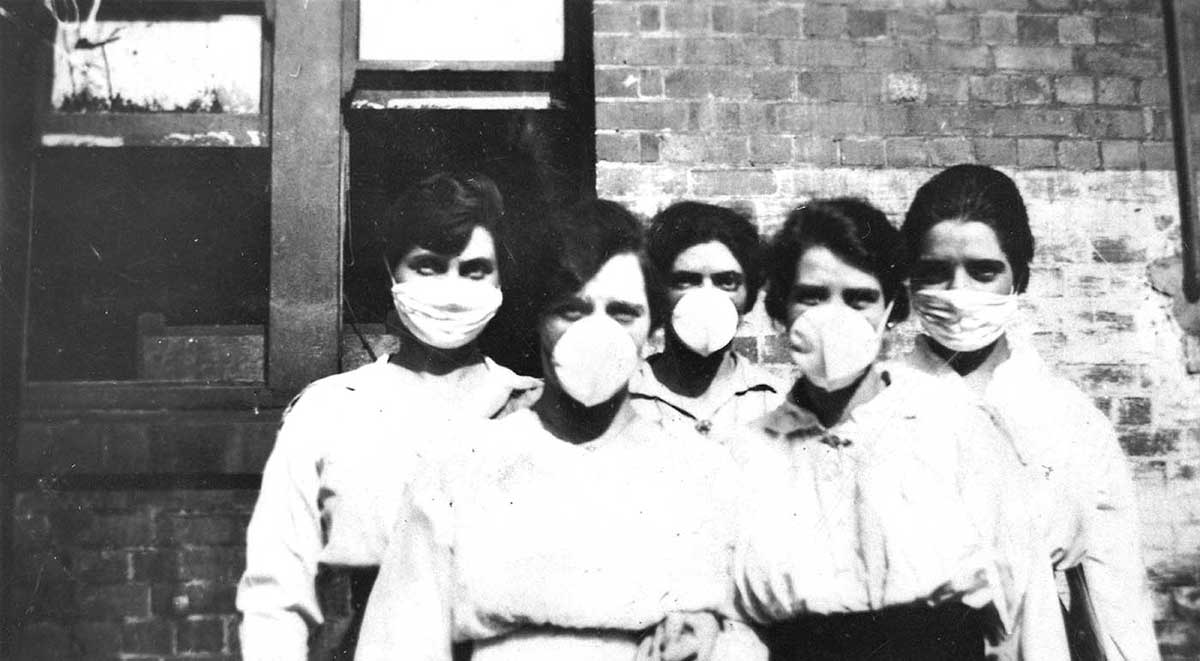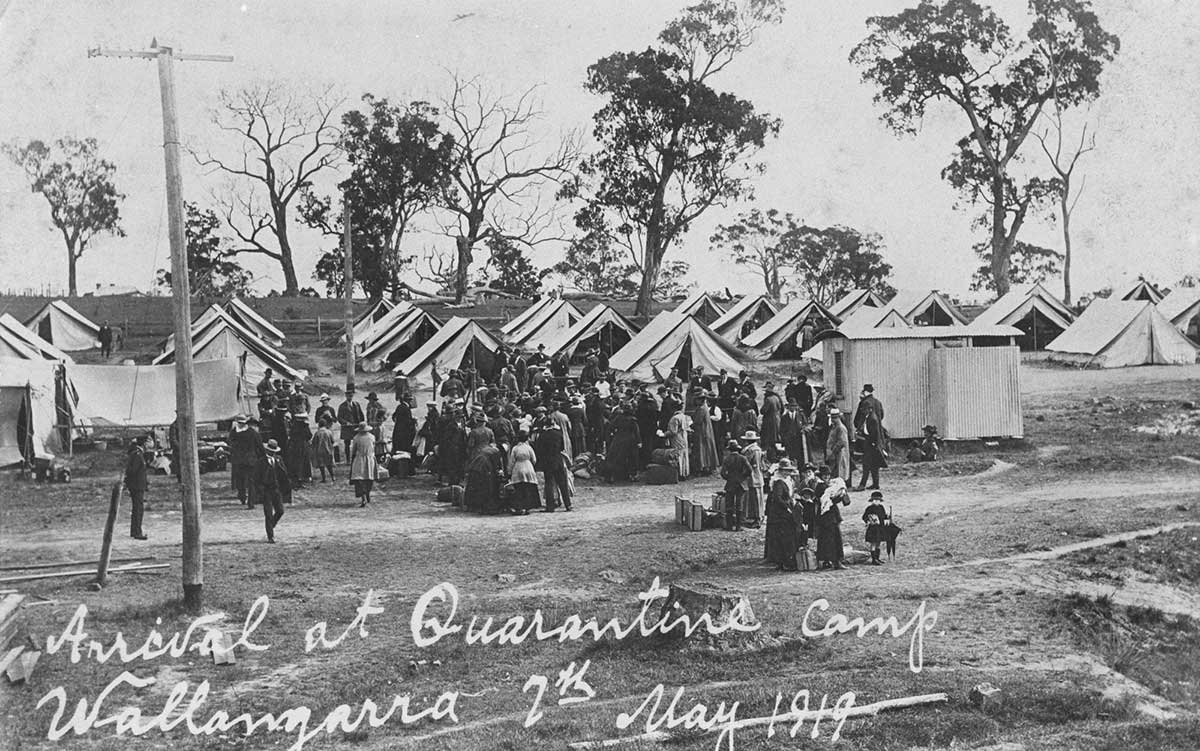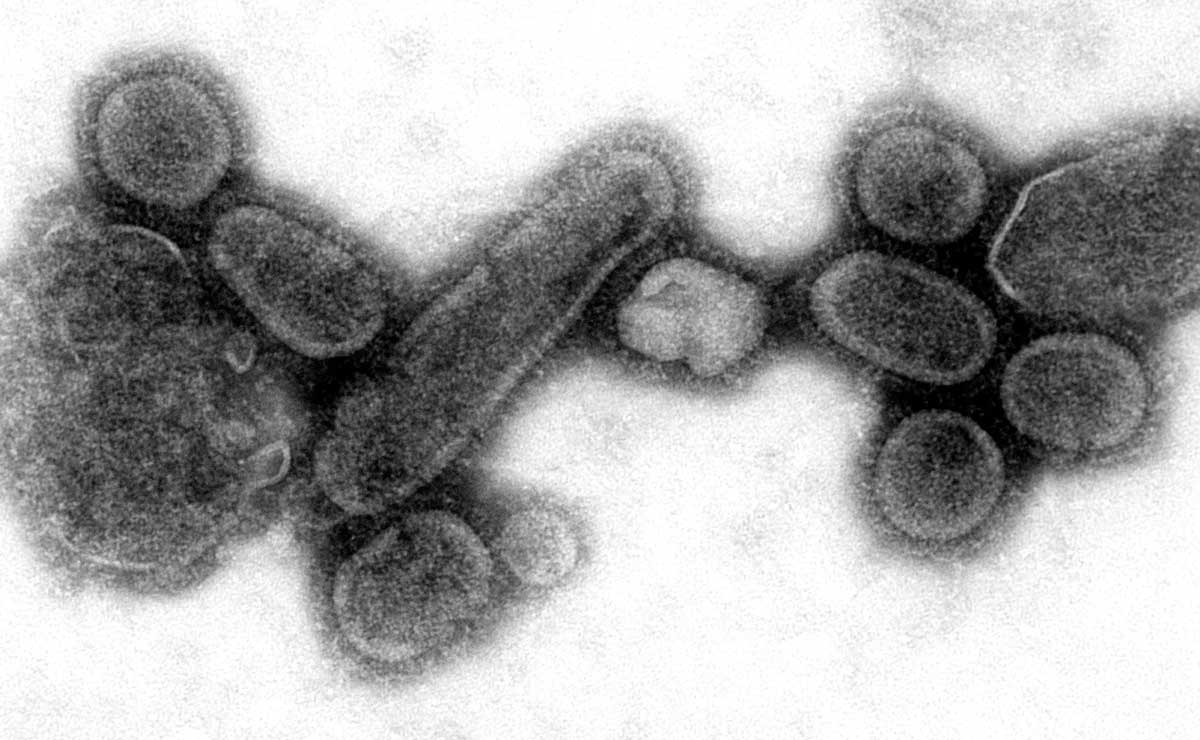An estimated 50 million people worldwide died as a result of the global influenza pandemic at the end of the First World War.
Australia’s swift quarantine response from late 1918 delayed the arrival of the flu, but cases began to appear across the country in early 1919.
About 40 per cent of the population fell ill and somewhere between 12,000 and 15,000 people died as the virus spread throughout Australia.
Sydney Morning Herald, 28 January 1919:
Australia must now face the fact that the scourge which has taken so heavy a toll from the rest of the world has invaded her own frontiers.
History of influenza in Australia
Influenza, or the flu, is a highly contagious respiratory illness caused by the influenza virus. It first occurred in Australia in 1820 but was only reported in the Sydney Almanack in 1834.
Influenza epidemics commonly occur each winter in Australia. Iinfluenza pandemics – epidemics of worldwide proportion – occurred in Australia in the 1890s, 1957, 1968 and 2009. The most devastating influenza pandemic in Australia was the 1919 outbreak.
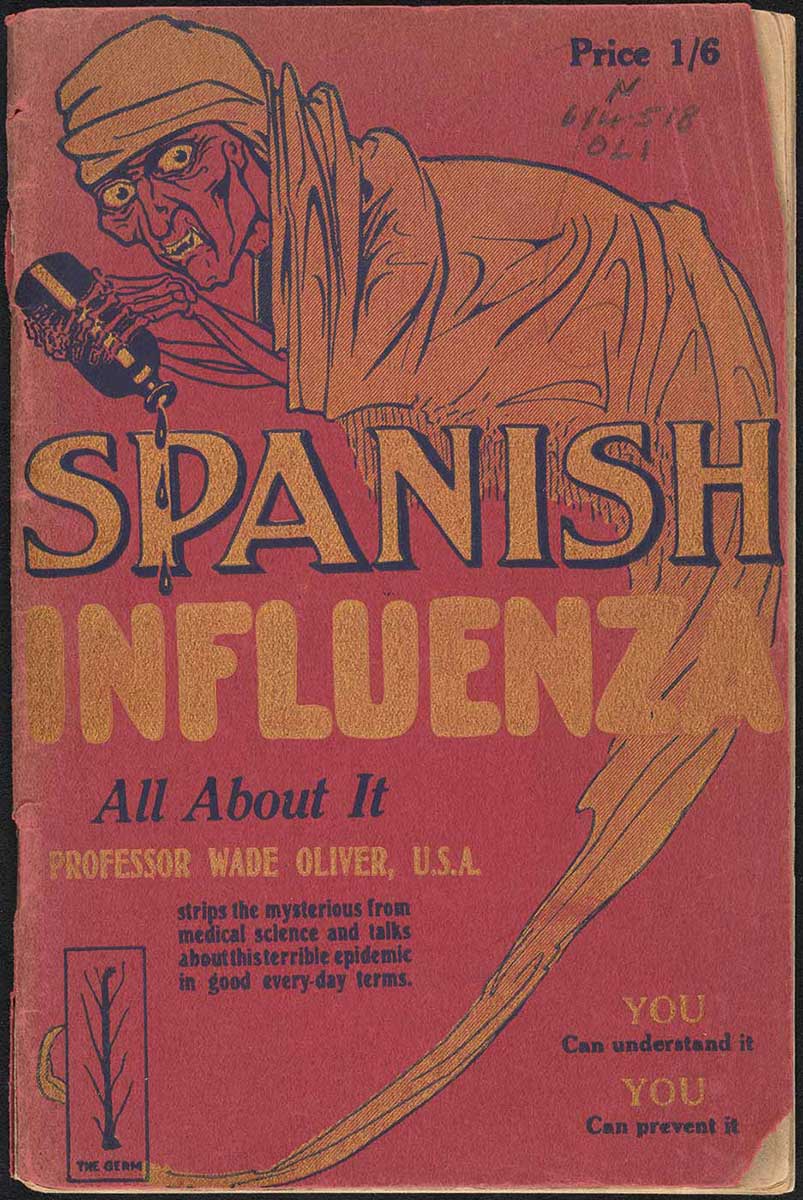
‘Spanish flu’ or ‘pneumonic influenza’
The 1918–19 influenza virus is often called ‘Spanish flu’ because it was widely reported in Spain before other countries. There was no wartime censorship in neutral Spain.
The pandemic started in 1918, most likely in the United States, and passed through soldiers in Western Europe in successively more virulent waves.
Unusually, this strain of flu affected healthy young adults much more than its usual targets of children, the elderly or those with weakened immune systems. In Australia the virus became known as ‘pneumonic influenza’.
The virus spread rapidly around the world as soldiers returned from active service at the end of the war. Because of its remoteness from Europe, Australia had months to make necessary preparations.
Quarantine in Australia
The Australian Quarantine Service monitored the spread of the influenza pandemic. Maritime quarantine was implemented from 17 October 1918 after outbreaks in New Zealand and South Africa.
The first infected ship to enter Australian waters was the Mataram, from Singapore, which arrived in Darwin on 18 October 1918. Over the next six months the quarantine service intercepted 323 vessels, 174 of which carried the infection. Of the 81,510 people who were checked for influenza, 1,102 were infected.
The Australian federal government held a national influenza planning conference in Melbourne on 26–27 November 1918. State health ministers, the directors-general of their health departments and British Medical Association representatives met with Commonwealth personnel.
The conference agreed to the federal government taking responsibility for proclaiming which states were infected, along with organising quarantine on land and at sea. The states would arrange emergency hospitals, vaccination depots, ambulance services, medical staff and public awareness measures.
Development of influenza vaccine
Commonwealth Serum Laboratories was established in Melbourne in 1916 to alleviate Australia’s dependence on imported vaccines. In 1918 it developed its first, experimental vaccine in anticipation of pneumonic influenza reaching mainland Australia.
Researchers did not know what caused influenza, but produced a vaccine that addressed the more serious secondary bacterial infections that were likely to cause death.
In the first six months of the pandemic Commonwealth Serum Laboratories produced three million free doses for Australian troops and civilians. It later evaluated the vaccines to be partially effective in preventing death in inoculated individuals.
Pandemic flu arrives in Australia
Maritime quarantine initially contained the spread of influenza virus. The first case of pneumonic influenza in mainland Australia was in Melbourne in early January 1919.
Early cases were so mild that there was initially confusion about whether the virus was ‘Spanish flu’ or a continuation of the seasonal flu virus from the previous winter. This uncertainty delayed the confirmation of an outbreak from Victorian health authorities.
By the end of January 1919 the flu infection had spread to New South Wales and South Australia. New South Wales was the first state to officially proclaim an outbreak of pneumonic influenza, on 27 January 1919, followed by Victoria the next day.
Tensions in the new Federation surfaced as the other states viewed Victoria’s delay in confirming the outbreak as a breach of the November 1918 agreement made with the Commonwealth Government. Soon each state made its own arrangements for handling and containing influenza outbreaks and state borders closed across the country.
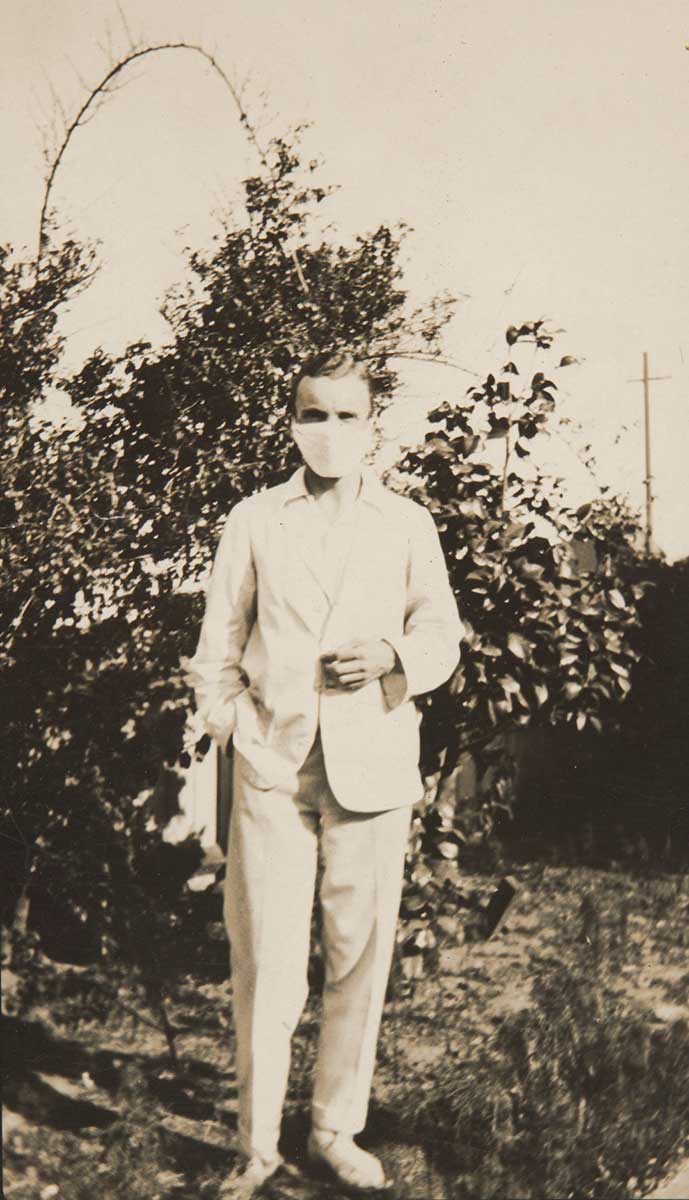
Death rate and impact of flu in Australia
Across Australia, state governments introduced mask wearing, restrictions on movement and bans on gathering at schools, churches and theatres.
Despite these measures, it is estimated between a quarter and a third of Australians caught the flu in 1919. Up to 15,000 people died.
First Nations communities were badly affected by flu and comprised nearly a third of those who died in Queensland.
Many First Nations people lived on missions. They were often in poor health before the pandemic and did not have access to good medical facilities. On some missions around 15 per cent of those who caught flu died. This was a much higher rate than among white Australians – about 1.2 per cent of those who caught the flu in Sydney died from it.
In Sydney strict measures were implemented to limit the spread of the disease. Even so, the city experienced three waves of outbreaks, with an estimated 3,500 deaths and many more infections.
In Perth the combination of the city’s relative isolation and effective state border quarantine control ensured pneumonic influenza didn’t appear there until June 1919. Perth experienced a spike in infections after crowds gathered to celebrate the end of the First World War, at Peace Day on 19 July 1919.
In Victoria all influenza cases had to be reported to health authorities and then transferred to hospital. With limited beds available, the Exhibition Building in Melbourne was used as a makeshift hospital and by August 1919 had treated more than 4,000 patients.
Home remedies for flu symptoms included camphor and eucalyptus oil and the use of products such as Wawn’s Wonder Wool and Hearne’s Bronchitis Cure.
End of the influenza pandemic
By the end of 1919 the influenza pandemic was over. Across the globe, the pandemic had a devastating effect on a population only just beginning to recover from years of war. Many more people died from the influenza pandemic – an estimated 50 million – than the 18 million people who had died as a result of the First World War.
The 1918–19 flu outbreak is considered second only to the Black Death bubonic plague pandemic in overall mortality rates.
In Australia the estimated death toll of up to 15,000 people was high, but less than a quarter of the country’s 62,000 death toll from the First World War.
Australia’s death rate of 2.7 per cent 1,000 of population was one of the lowest recorded of any country during the pandemic. Nevertheless, up to 40 per cent of the population was infected, and some First Nations communities recorded a mortality rate of 50 per cent.
In our collection
Explore Defining Moments
You may also like
References
JHL Cumpston, Influenza and maritime quarantine in Australia, Trove
NSW Department of Public Health, Report on the influenza epidemic in New South Wales in 1919, Trove
Robyn Arrowsmith, A Danger Greater Than War: NSW and the 1918–19 Influenza Pandemic, Australian Homeland Security Research Centre, Canberra, 2007.
Bev Blackwell, Western Isolation: The Perth Experience of the 1918–1919 Influenza Pandemic, Australian Homeland Security Research Centre, Canberra, 2007.
Peter Curson and Kevin McCracken, ‘An Australian perspective of the 1918–1919 influenza pandemic’, New South Wales Public Health Bulletin, vol. 17, no. 8, 2006.
Anthea Hyslop, 'The Great Pandemic of 1918–1919: Pneumonic Influenza in Australia', Victorian Historical Journal, Vol.93, No.2, December 2022.
